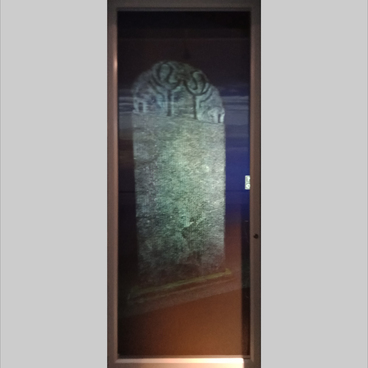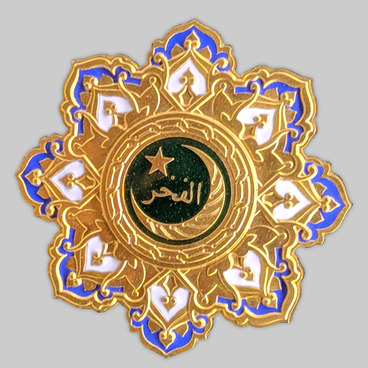A fragment of a statue of Prince Kul-Tegin dates back to the 8th century AD. The exhibit item was discovered in 1957 during excavations of the village of Kosho-Tsaidam, on the banks of the Orkhon River in northern Mongolia. The exhibit of the Museum of the History of Tatar Statehood and the Republic of Tatarstan represents a copy of the sculpture, and the original is kept in the Central Museum of Ulan Bator in Mongolia.
Kul-Tegin (685–731) is a political and military leader of the Second East Turkic Khaganate – a medieval state used to locate on the territory of modern Mongolia. During his reign, he got a victory in the war with China and concluded a peace treaty beneficial for the khaganate, which expanded border trade – the Chinese emperor Xuanzong had to regularly send to the khaganate 100,000 pieces of silk for the agreed number of horses. In total, Kul-Tegin participated in 25 campaigns and 13 battles.
Most likely, the statue depicted the prince in full growth, but only one fragment has survived to this day. There is a three-part headwear on the head of Kul-Tegin. The golden eagle with outstretched wings was placed in the central part of the helmet. According to experts, this bird of prey was one of the totems of the Turks and symbolized their main deity – Tengri.
The Russian explorer Nikolai Yadrintsev found a monument of Turkic runic writing of the 8th century in 1889, in the Kosho-Tsaidam Valley on the banks of the Orkhon River in Northern Mongolia. It was a memorial complex dedicated to the Turkic statesmen: Bilge-khagan and his brother – Kul-Tegin. The complex included a temple and a stone stele with inscriptions in honour of the prince and images of fighting dragons. In front of the temple’s entrance, there were a number of sculptures that symbolized dignitaries and servants from the ruler’s guard of honour, as well as animals – rams and turtles. Inside the temple, there was an altar with a hearth and marble statues of Kul-Tegin and his wife.
After Yadrintsev discovered the memorial complex, archaeologists were actively working in the region and additionally found a number of monuments of times of the Second East Turkic Khaganate, including this statue.
Kul-Tegin (685–731) is a political and military leader of the Second East Turkic Khaganate – a medieval state used to locate on the territory of modern Mongolia. During his reign, he got a victory in the war with China and concluded a peace treaty beneficial for the khaganate, which expanded border trade – the Chinese emperor Xuanzong had to regularly send to the khaganate 100,000 pieces of silk for the agreed number of horses. In total, Kul-Tegin participated in 25 campaigns and 13 battles.
Most likely, the statue depicted the prince in full growth, but only one fragment has survived to this day. There is a three-part headwear on the head of Kul-Tegin. The golden eagle with outstretched wings was placed in the central part of the helmet. According to experts, this bird of prey was one of the totems of the Turks and symbolized their main deity – Tengri.
The Russian explorer Nikolai Yadrintsev found a monument of Turkic runic writing of the 8th century in 1889, in the Kosho-Tsaidam Valley on the banks of the Orkhon River in Northern Mongolia. It was a memorial complex dedicated to the Turkic statesmen: Bilge-khagan and his brother – Kul-Tegin. The complex included a temple and a stone stele with inscriptions in honour of the prince and images of fighting dragons. In front of the temple’s entrance, there were a number of sculptures that symbolized dignitaries and servants from the ruler’s guard of honour, as well as animals – rams and turtles. Inside the temple, there was an altar with a hearth and marble statues of Kul-Tegin and his wife.
After Yadrintsev discovered the memorial complex, archaeologists were actively working in the region and additionally found a number of monuments of times of the Second East Turkic Khaganate, including this statue.



